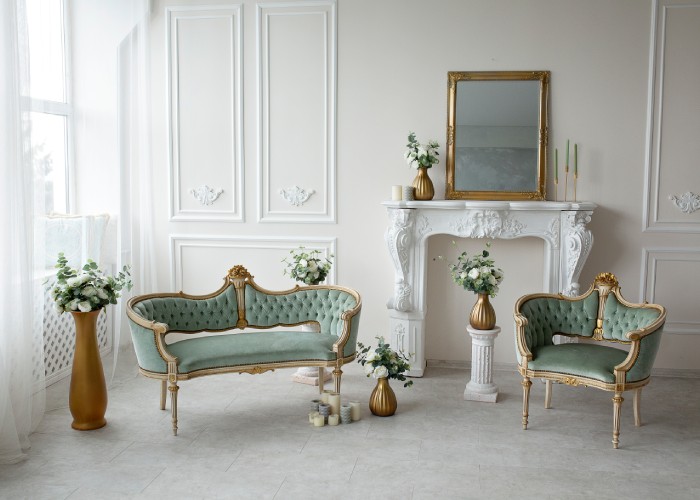There’s an undeniable charm that antiques bring into our lives, an enigmatic connection to eras gone by, crafted not just by time but by history, culture, and human touch. Also, it’s no secret that historical pieces add to the value of your home, whether you are (or not!) planning to let or sell it.

Amidst London’s bustling streets and the steady beat of modernity, antiques stand as silent storytellers, waiting for a listener. Westland London, renowned antique dealers, have always believed in this sentiment. They understand that beyond the vintage façade of each artefact lies a story, waiting to be unravelled and appreciated.
For those keen on understanding and embracing this world, it’s essential to recognize not just the value, but also the history and intricacies of these cherished possessions. In this guide, we embark on a journey, delving deep into the world of antiques, aiming to equip you with the knowledge to identify and appreciate these timeless gems.
How Can I Increase The Price of My Property with Antiques?
One of the easiest ways to boost the value of your property is by incorporating antiques and vintage items into your decor. Not only do antiques add a touch of elegance and character to your space, but they can also increase your property’s perceived value. Here are a few tips for incorporating antiques to boost your property value:
- Choose wisely: Stick to high-quality, authentic antiques that will stand the test of time.
- Incorporate tastefully: Use antiques in a way that complements your overall decor without overwhelming the space.
- Emphasize authenticity: Highlight the history and provenance of your antiques to add to their value.
- Consider restoration: Restoring antiques to their original condition can greatly increase their value.
In the sections that follow, we will walk you through the steps of identifying high-quality antique pieces that will help your property make a statement
How To Identify Valuable Antiques
The world of antiques is vast, diverse, and often shrouded in mystery. With centuries-old pieces that whisper tales of times gone by, identifying valuable antiques can be both a challenge and an adventure. For enthusiasts, collectors, or even those who’ve chanced upon an heirloom, knowing the worth and history of an antique piece is not just about its monetary value but also about appreciating the craftsmanship and narrative it carries.
1. Research and Knowledge
Begin with a basic understanding of antiques. Familiarise yourself with periods, styles, and renowned craftsmen. Books, online databases, or consultation with experts can be invaluable. Remember, knowledge is the cornerstone of any antique evaluation.
2. Examine the Craftsmanship
Quality craftsmanship often suggests a piece’s value. Meticulous details, precise carvings, or even the symmetry can indicate the work of a skilled artisan, increasing the item’s value.
3. Check for Marks or Signatures
Many craftsmen, especially those from the 18th century onwards, left their marks or signatures on their creations. Finding such a mark can offer insights into the item’s origin, age, and sometimes, its history.
4. Age Matters
Antiques, by definition, should be at least 100 years old. However, not everything old is valuable. The era an item belongs to can significantly influence its worth. For instance, pieces from certain periods, like the Georgian or Victorian era, might fetch a higher value due to their distinct style and rarity.
5. Rarity and Demand
The basic economic principle of supply and demand applies to antiques. If an item is rare yet highly sought after, its value will be on the higher side.
6. Provenance
In the antique world, the item’s history or provenance can significantly boost its value. If you can trace back an item’s ownership or even have tales associated with it, it can make the piece more intriguing and desirable.
7. Condition and Integrity
While age might bring value, the condition is equally crucial. An item that has weathered centuries yet remains in impeccable condition will be more valuable than a similar item showing signs of damage. However, restoration, if not done by experts, can sometimes diminish the value. It’s a delicate balance between preserving originality and ensuring longevity.
8. Seek Expert Opinions
While preliminary research can be done independently, consulting an expert can provide a clearer picture. Experienced appraisers or establishments, like auction houses, can give insights into an item’s worth and history. They’ll be equipped with resources and expertise that might not be readily available to the public.
9. Attend Antique Shows and Auctions
Being present at antique shows or auctions can provide hands-on learning. Observing what sells and at what price, listening to expert discussions, and even interacting with other collectors can enhance one’s understanding and ability to identify valuable pieces.
10. Trust Your Instincts
Sometimes, the allure of an antique is intangible. It’s a gut feeling, an intrinsic connection to the piece. While it’s essential to be informed and rational, there are moments where you must trust your instincts.
Bottom Line
The world of antiques is a mesmerising journey through time, cultures, and histories. While understanding and identifying the value of these items can be complex, it’s also deeply rewarding. Whether you’re a seasoned collector or a newbie, always remember that beyond monetary value, antiques are treasures because of the timeless stories they hold and the bygone eras they represent.




